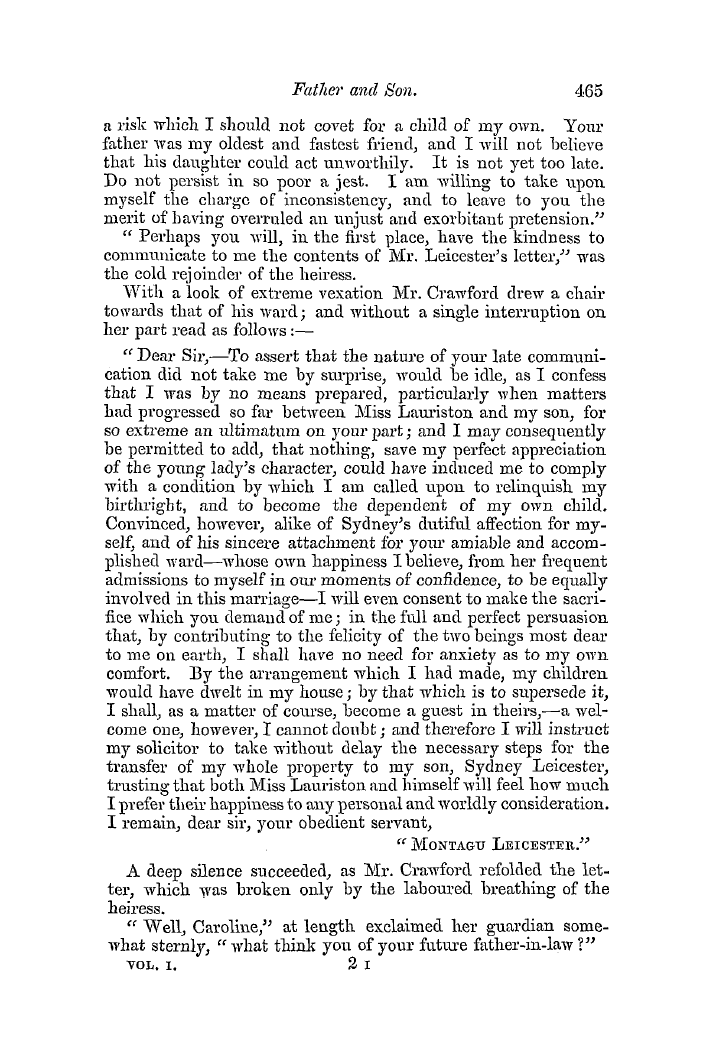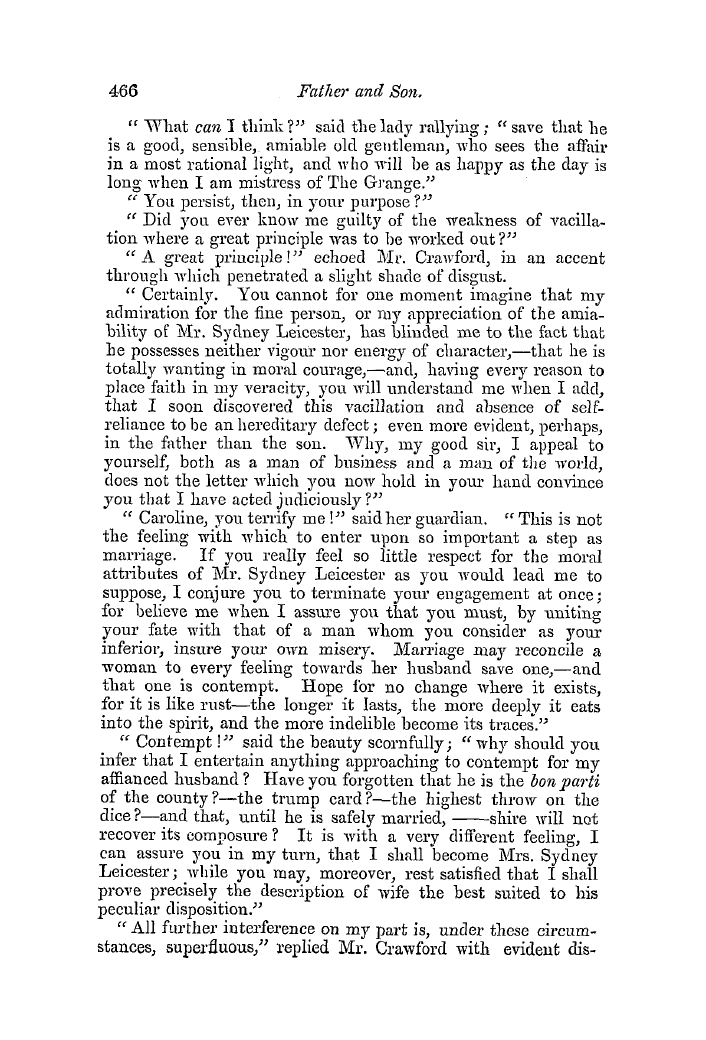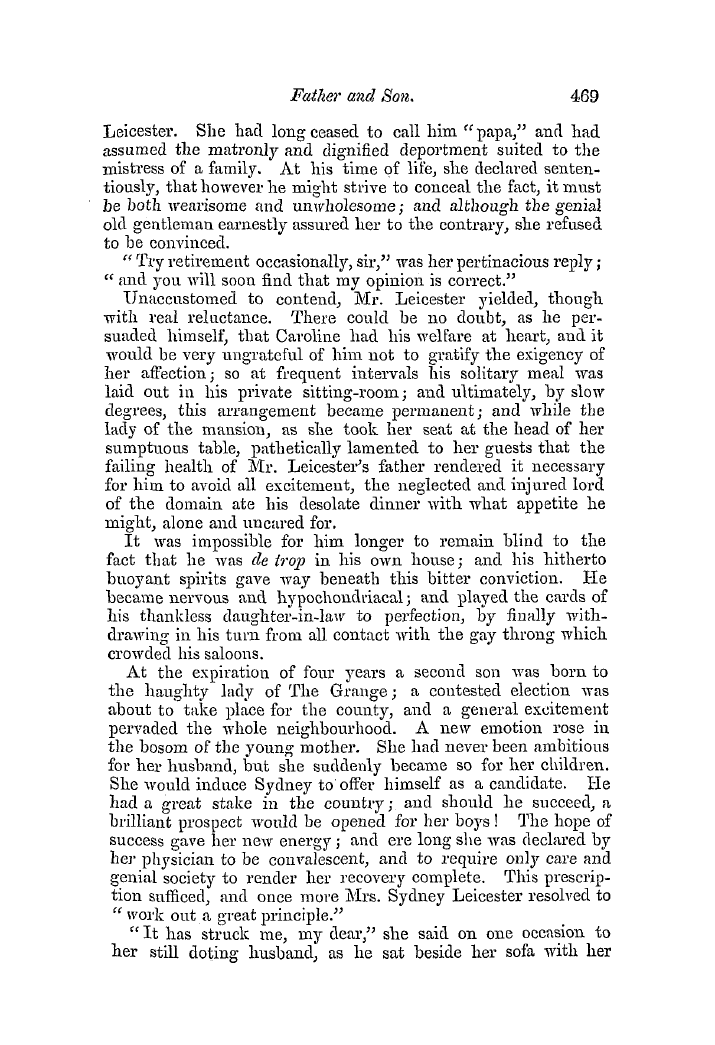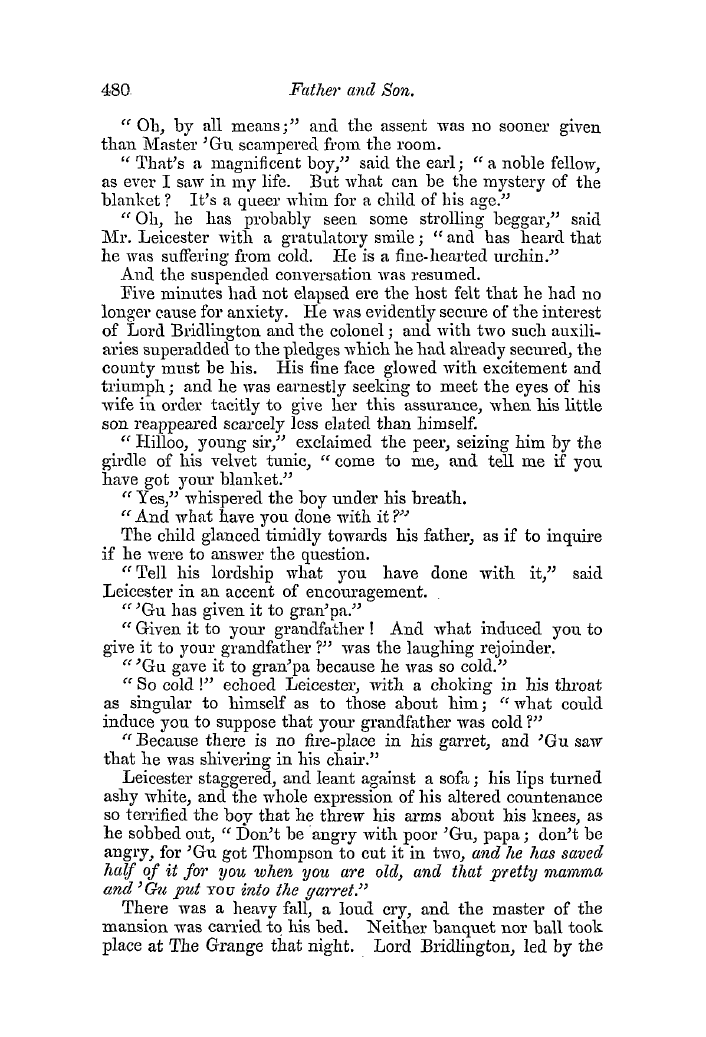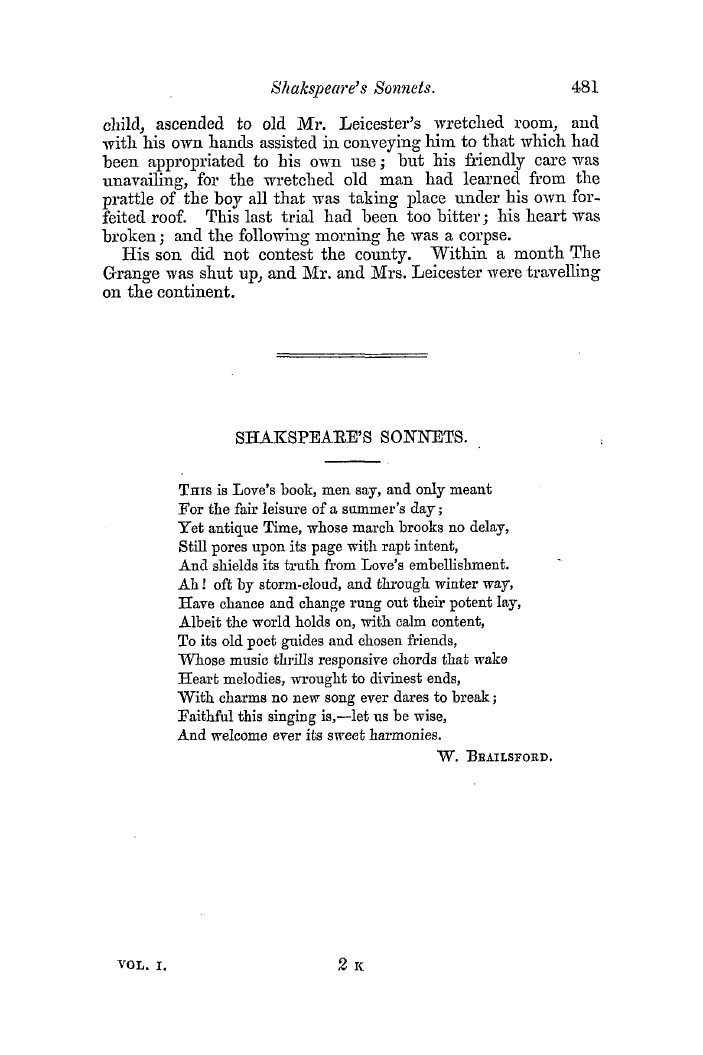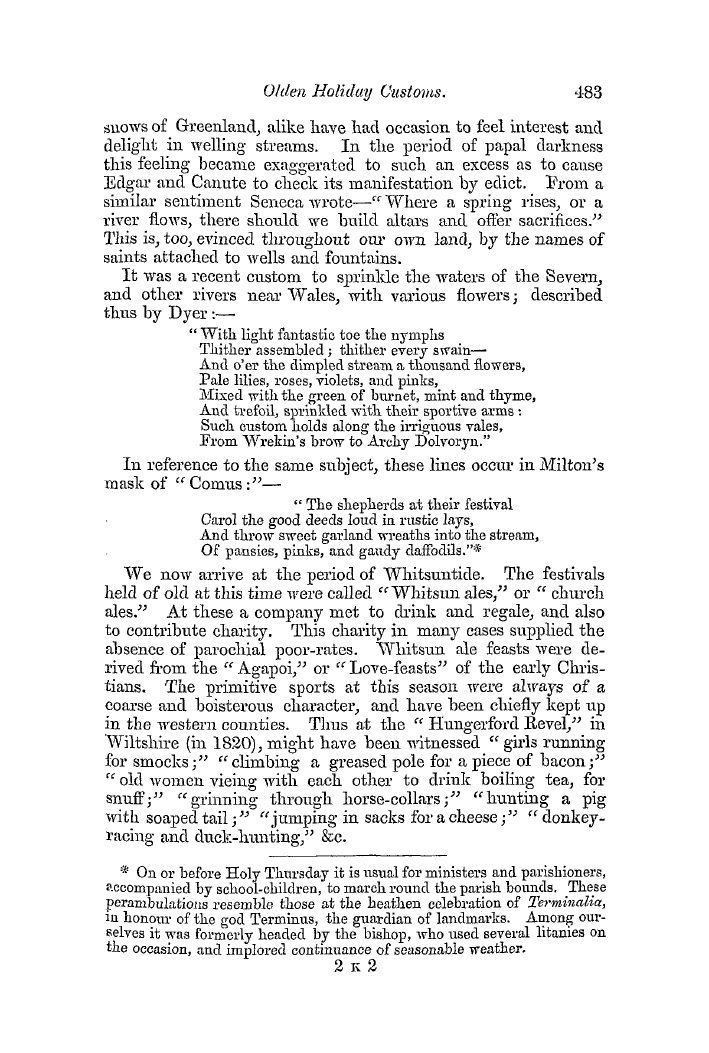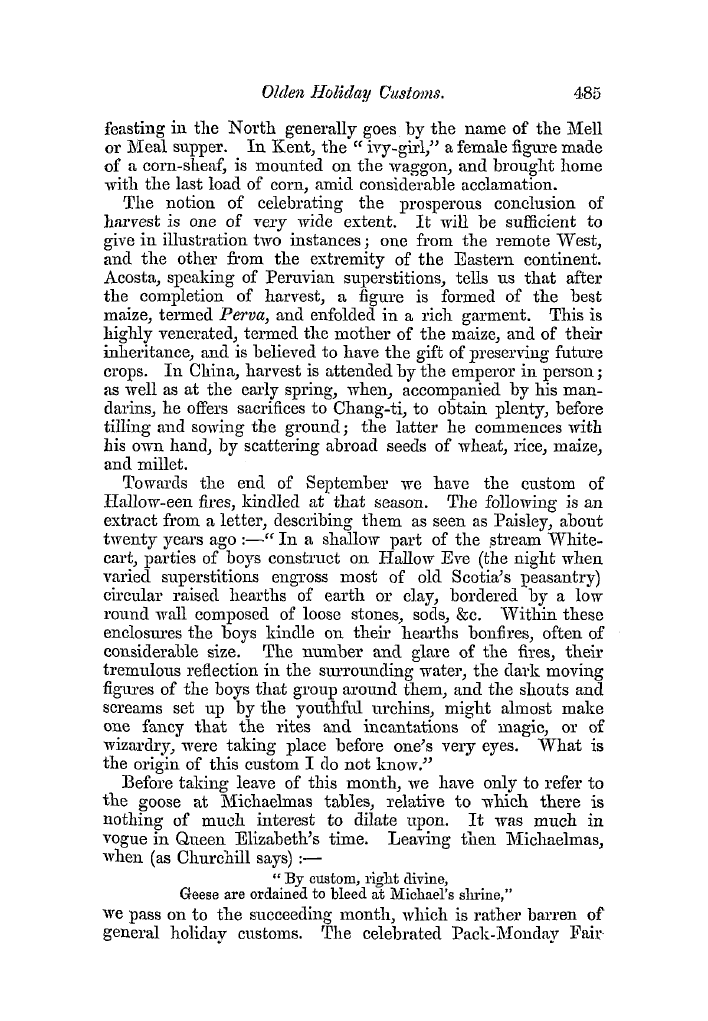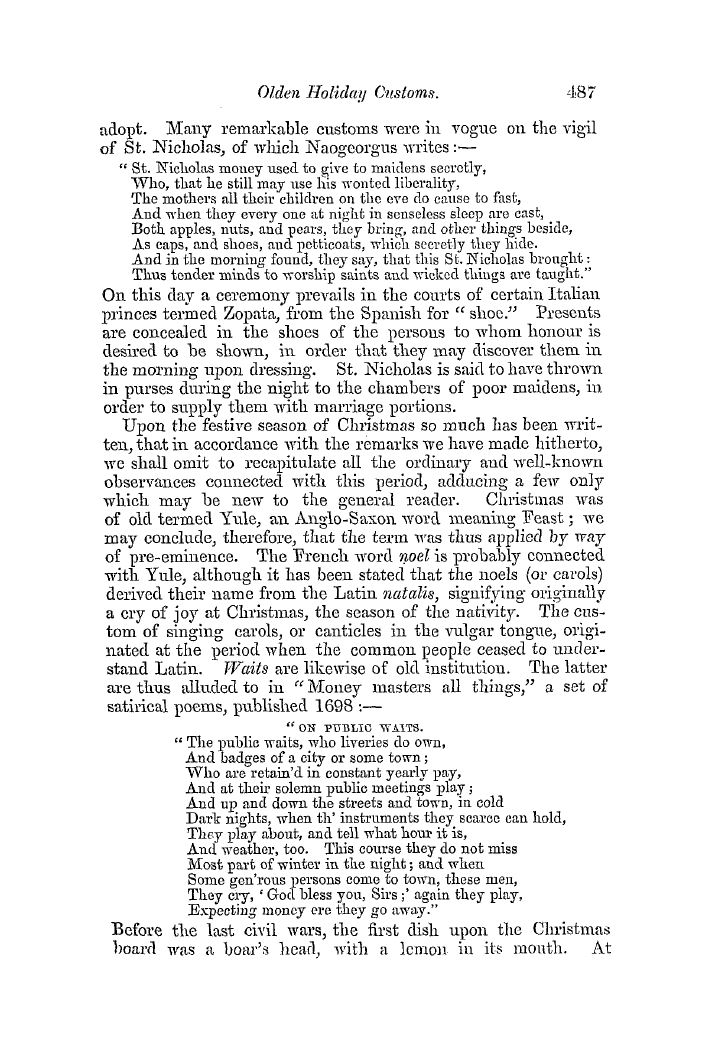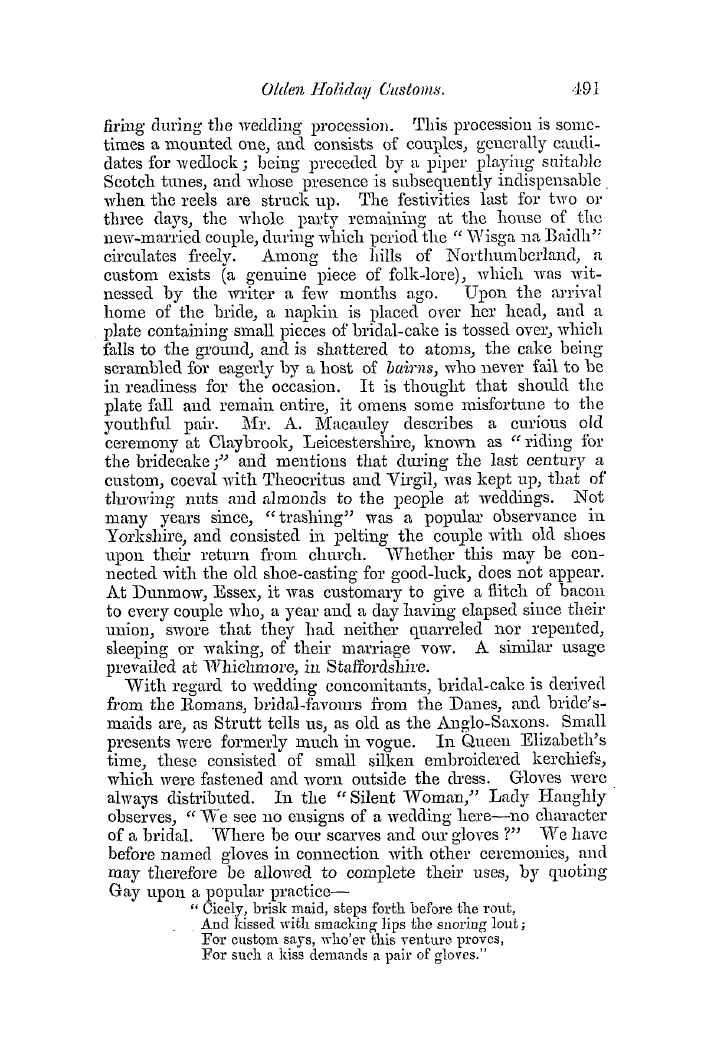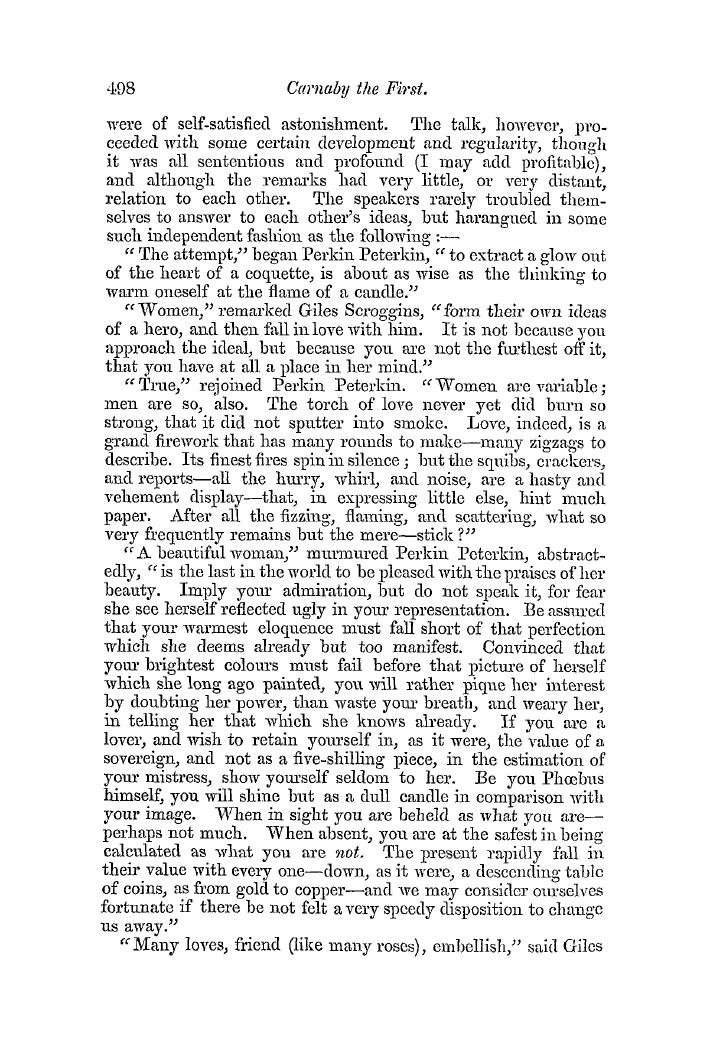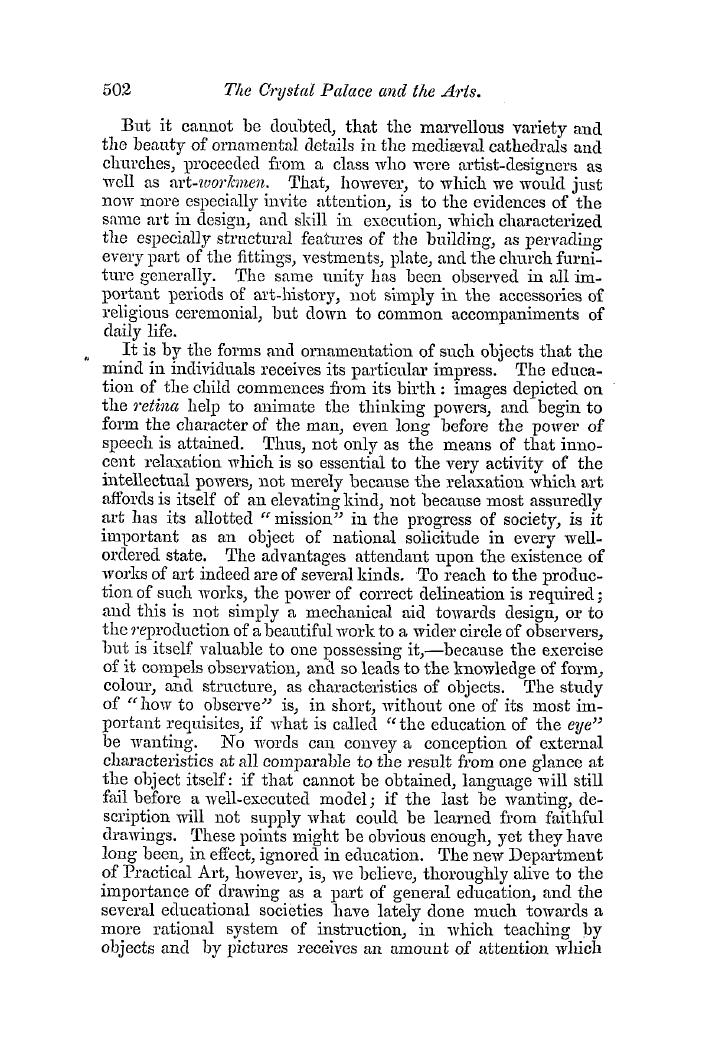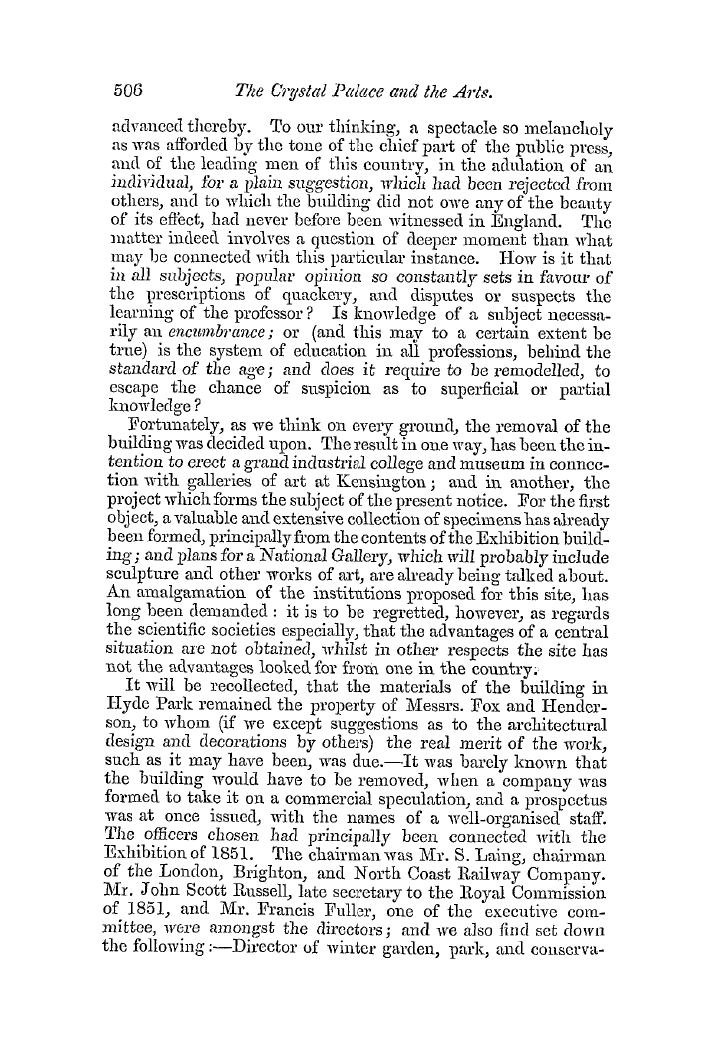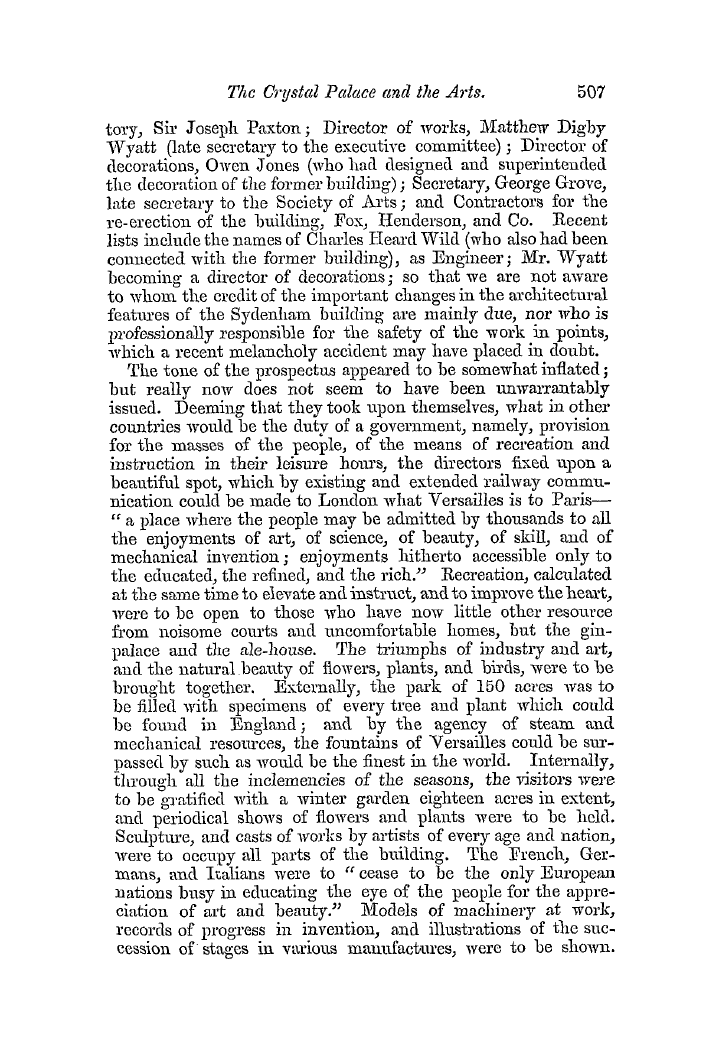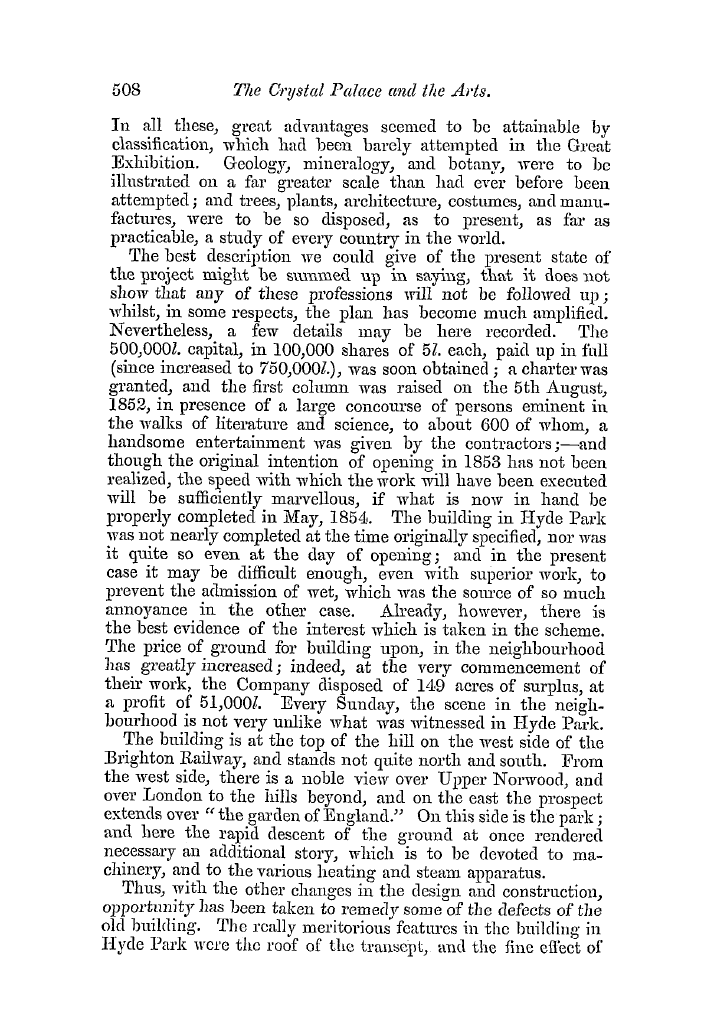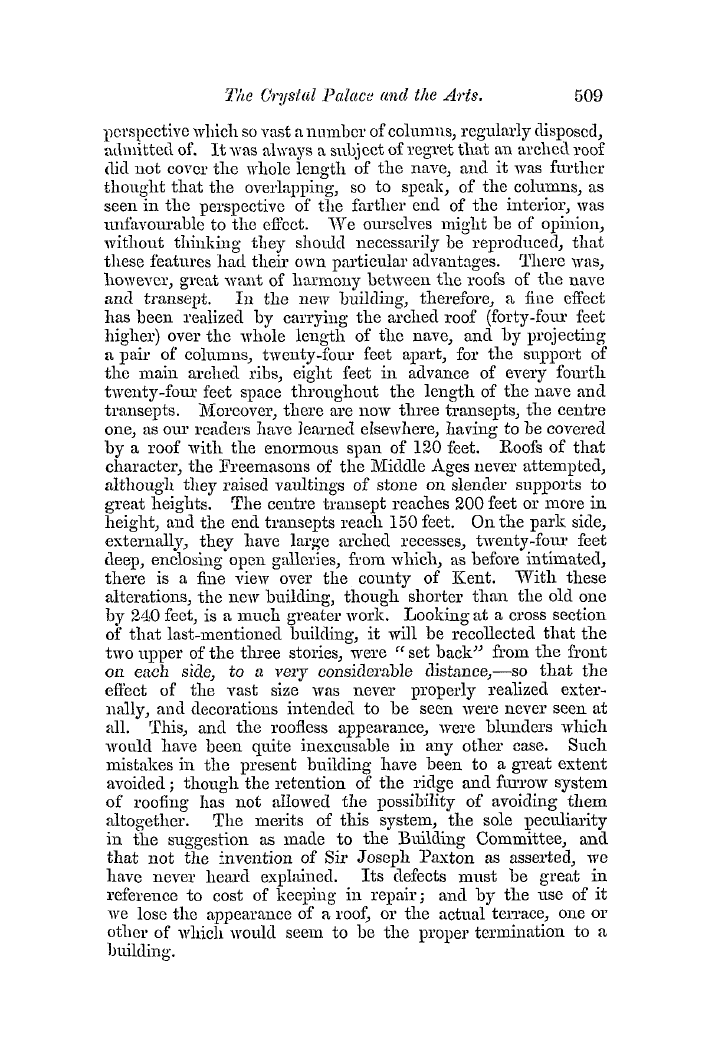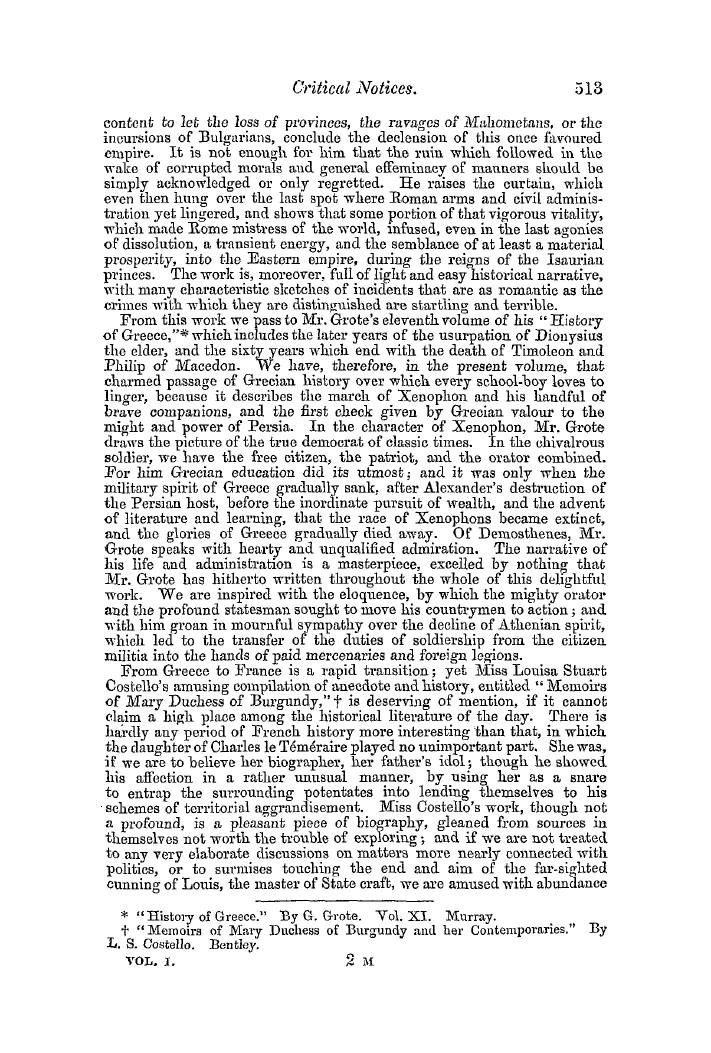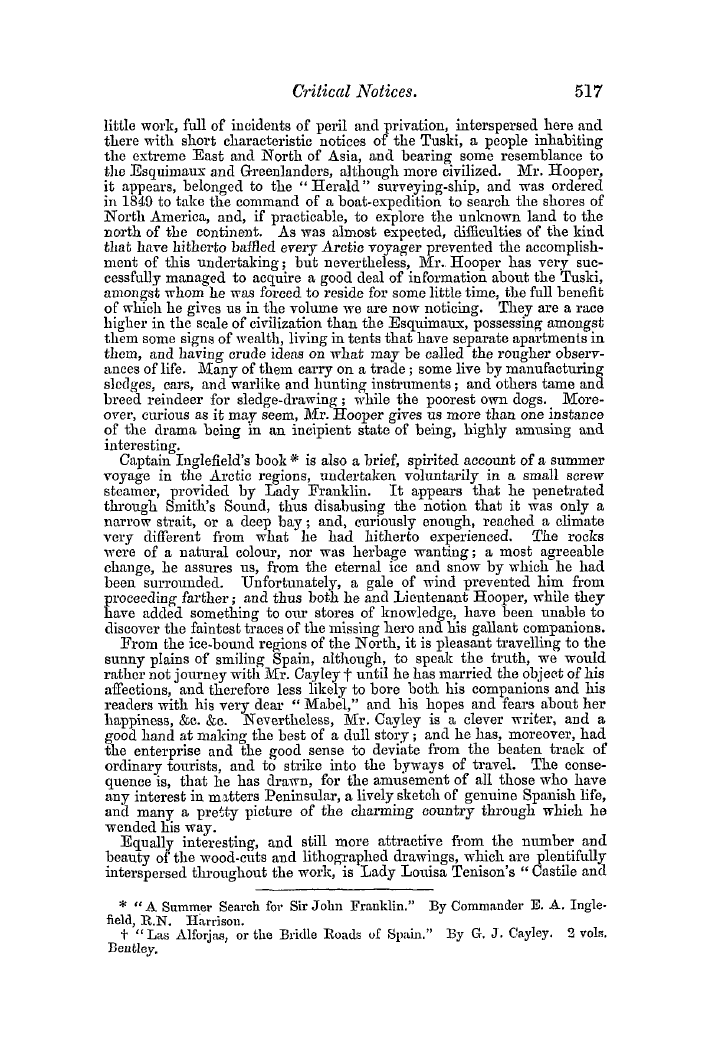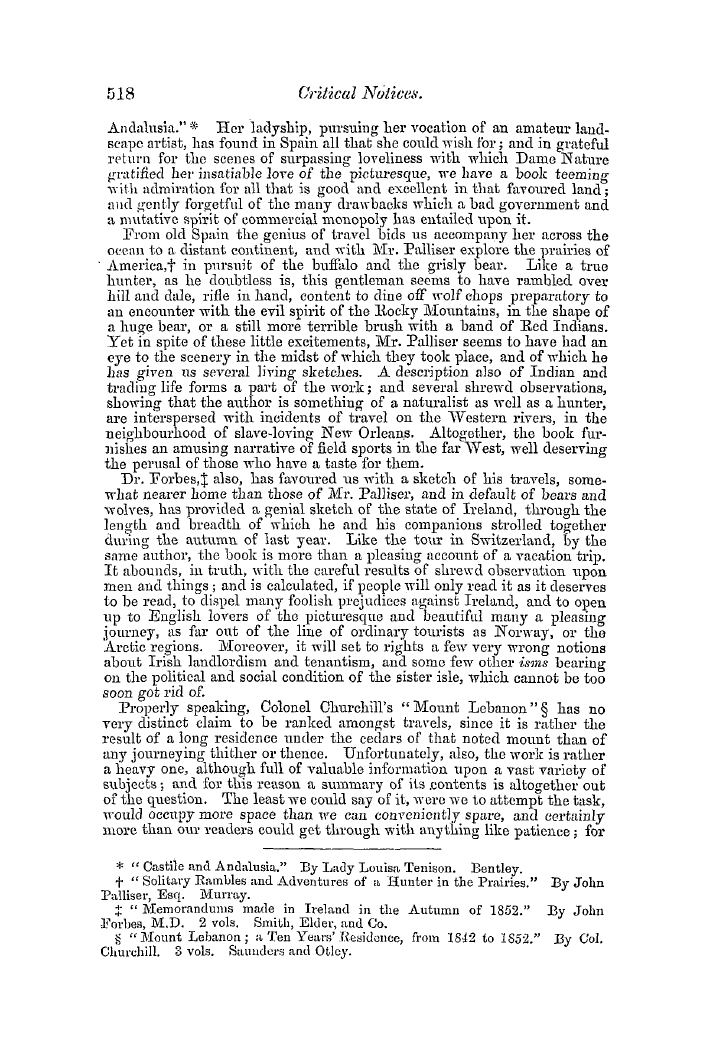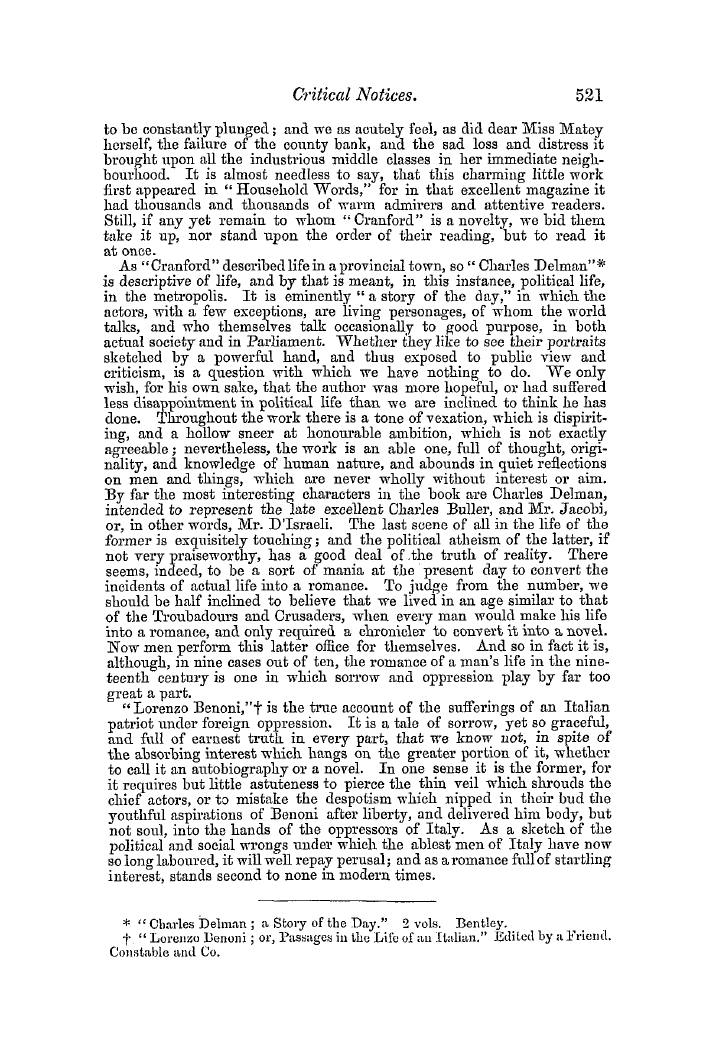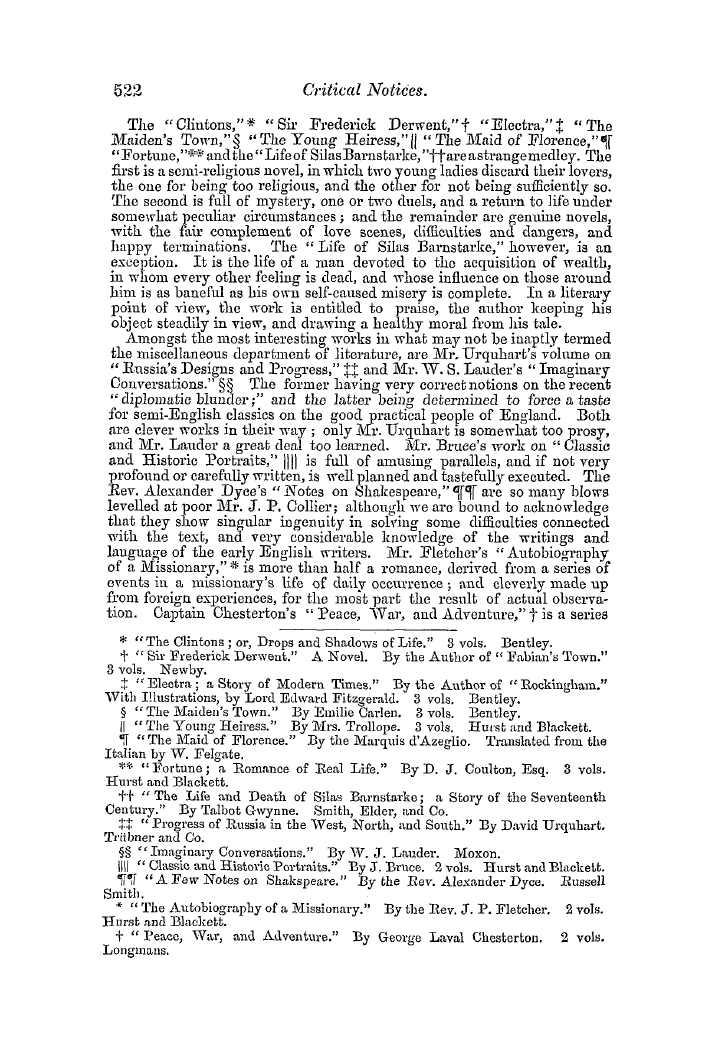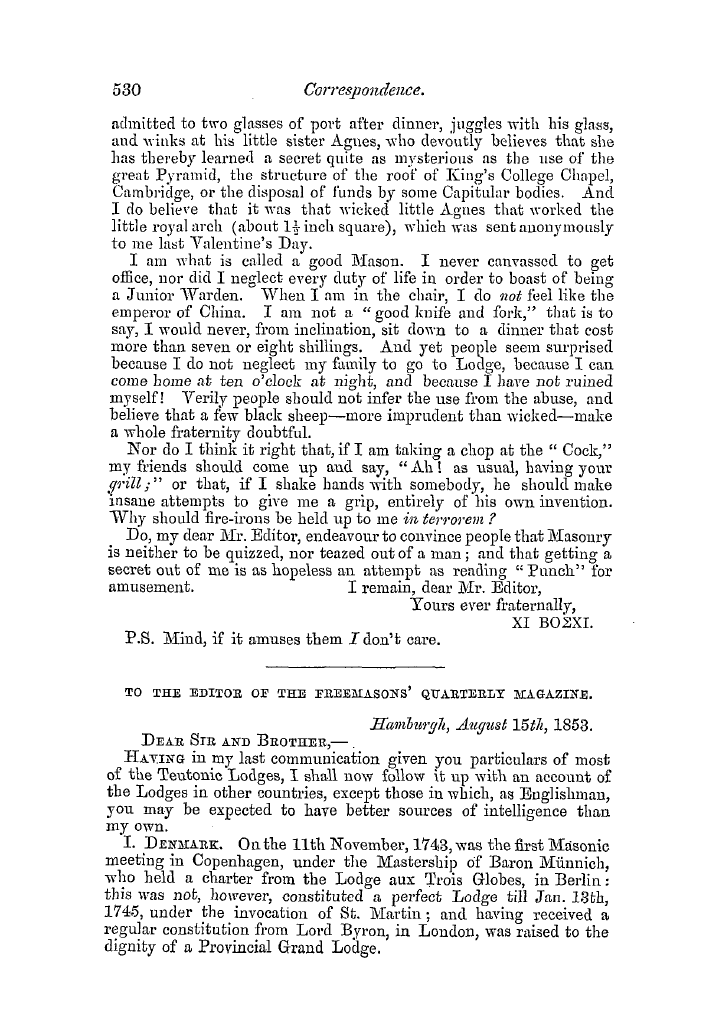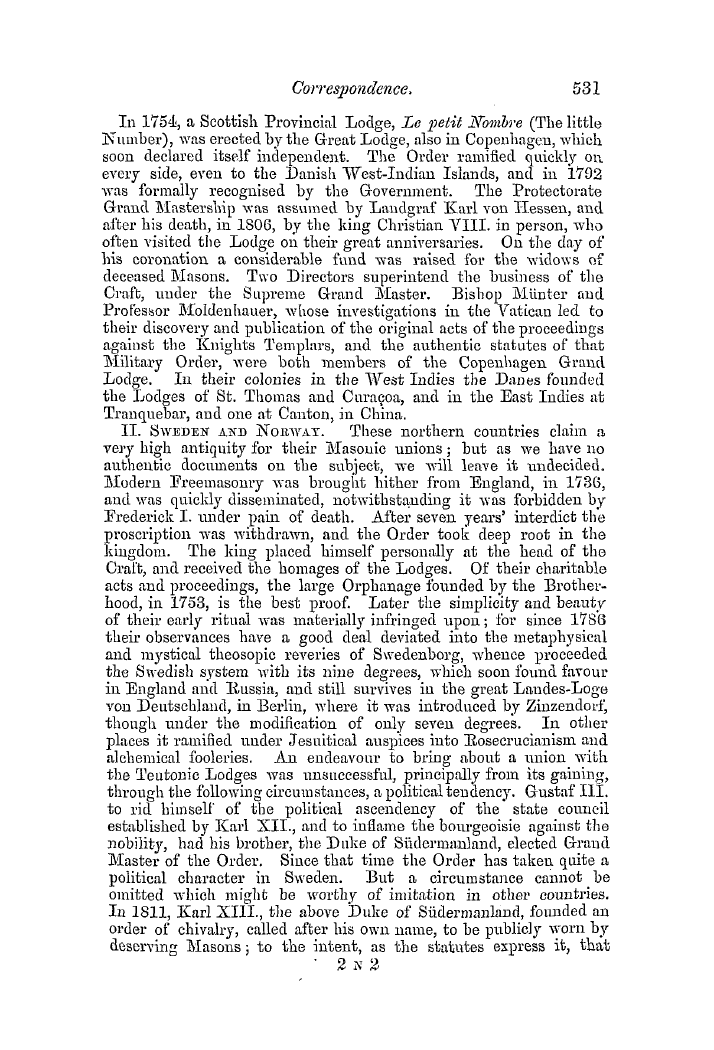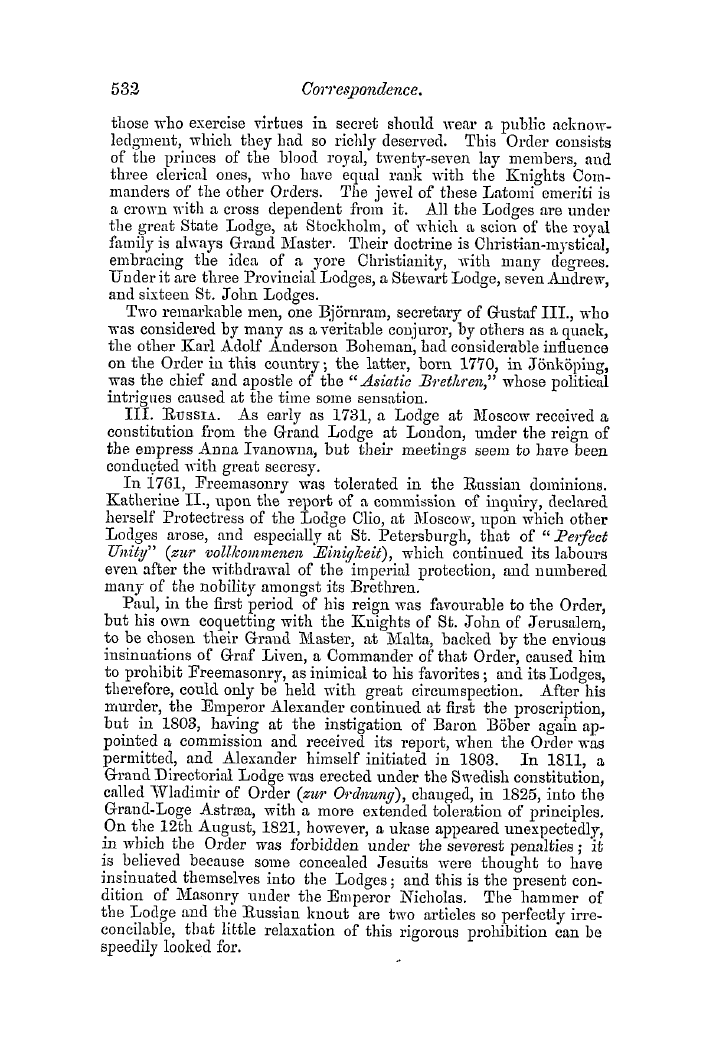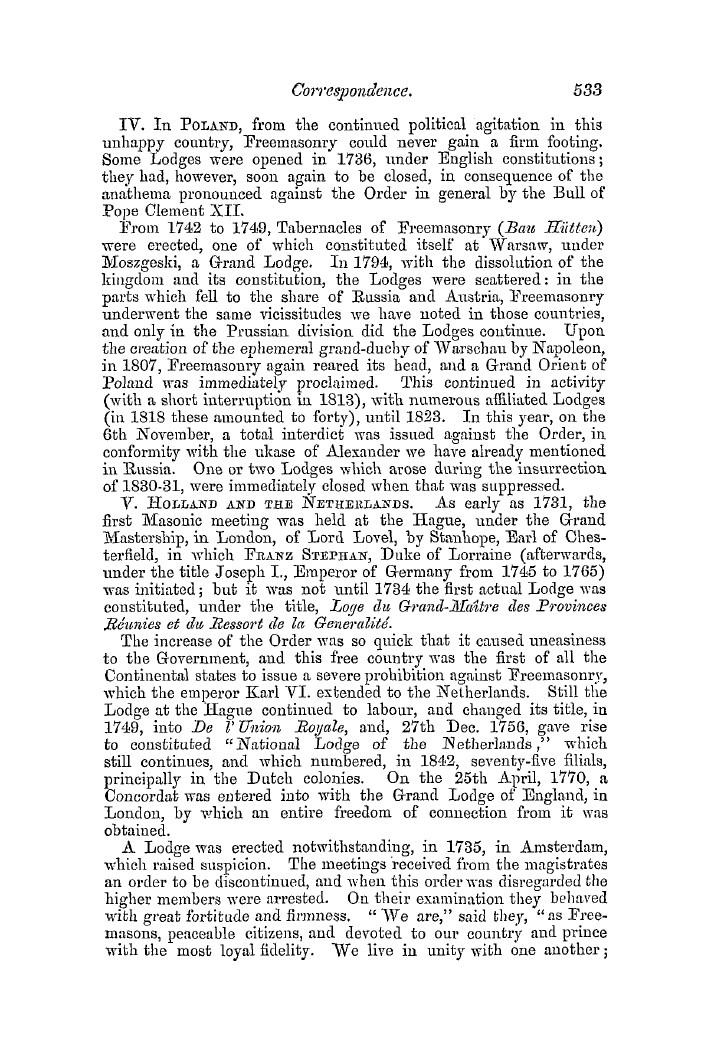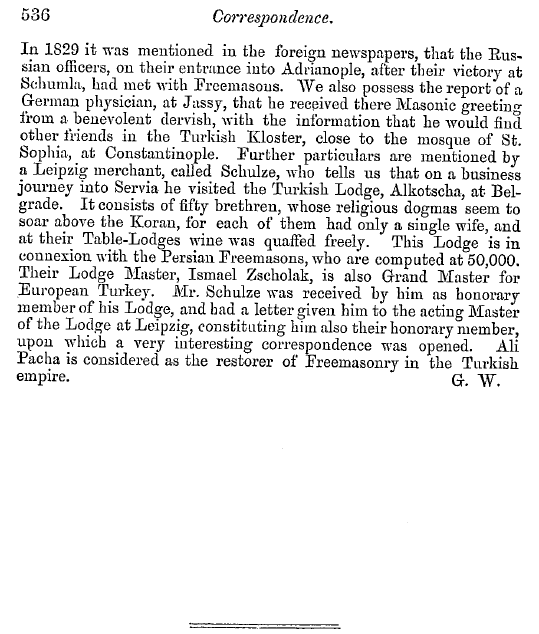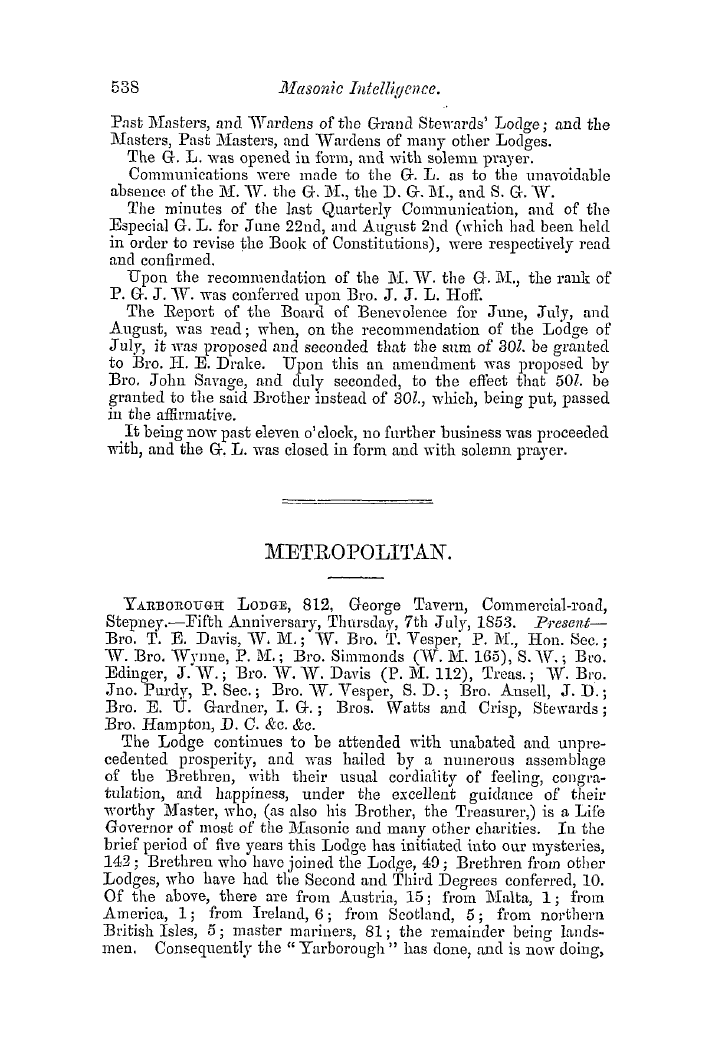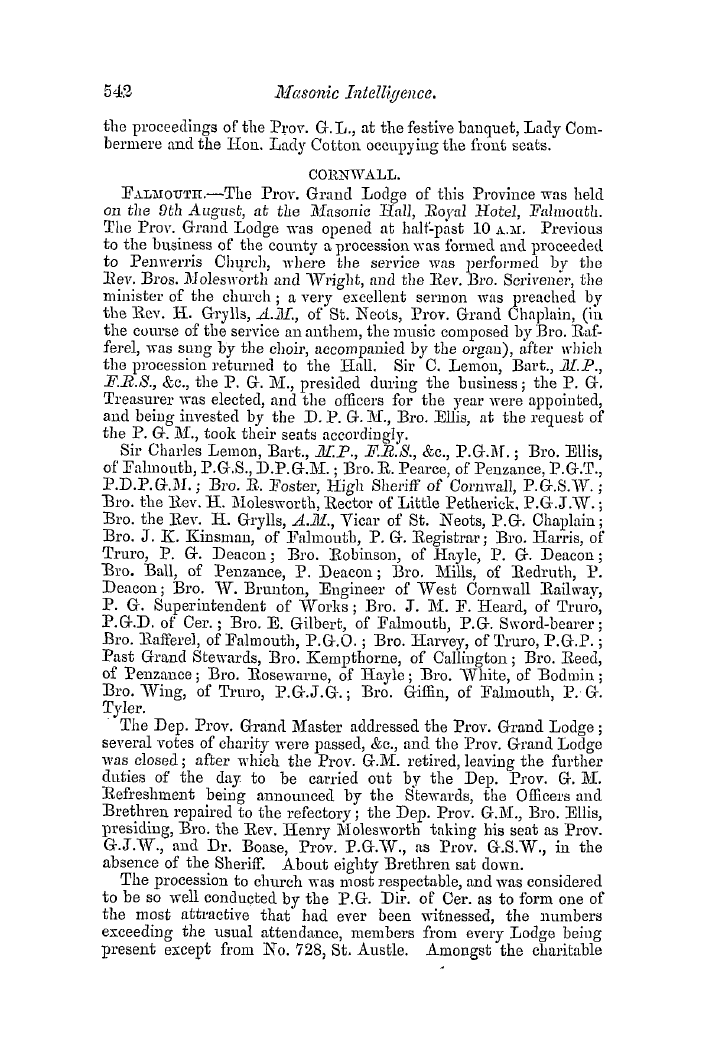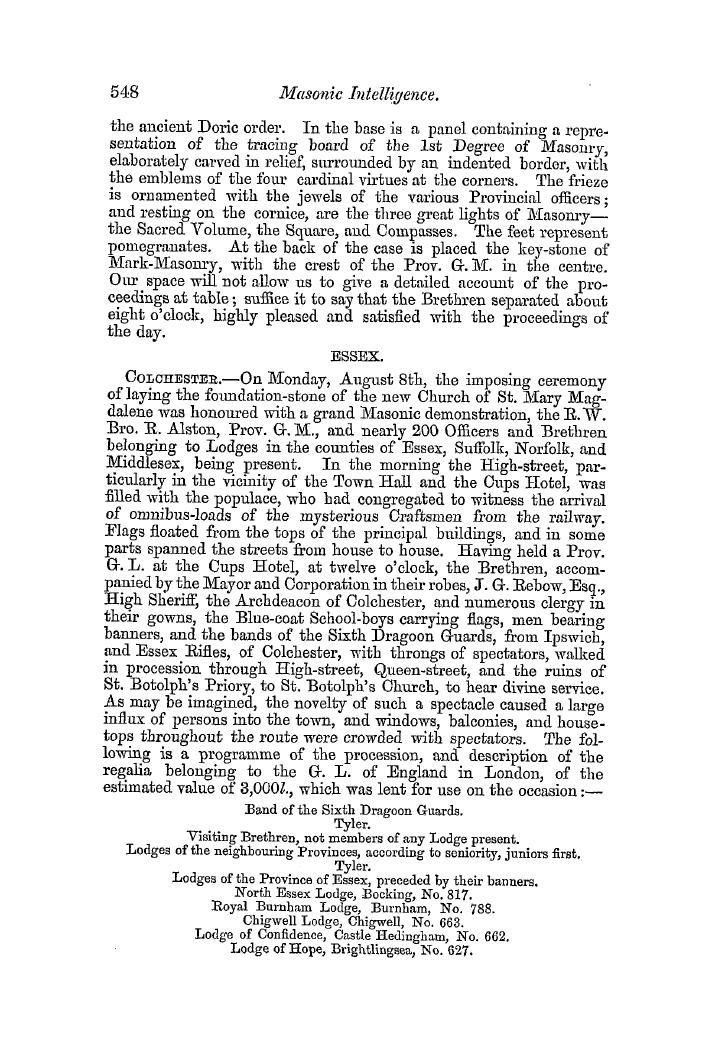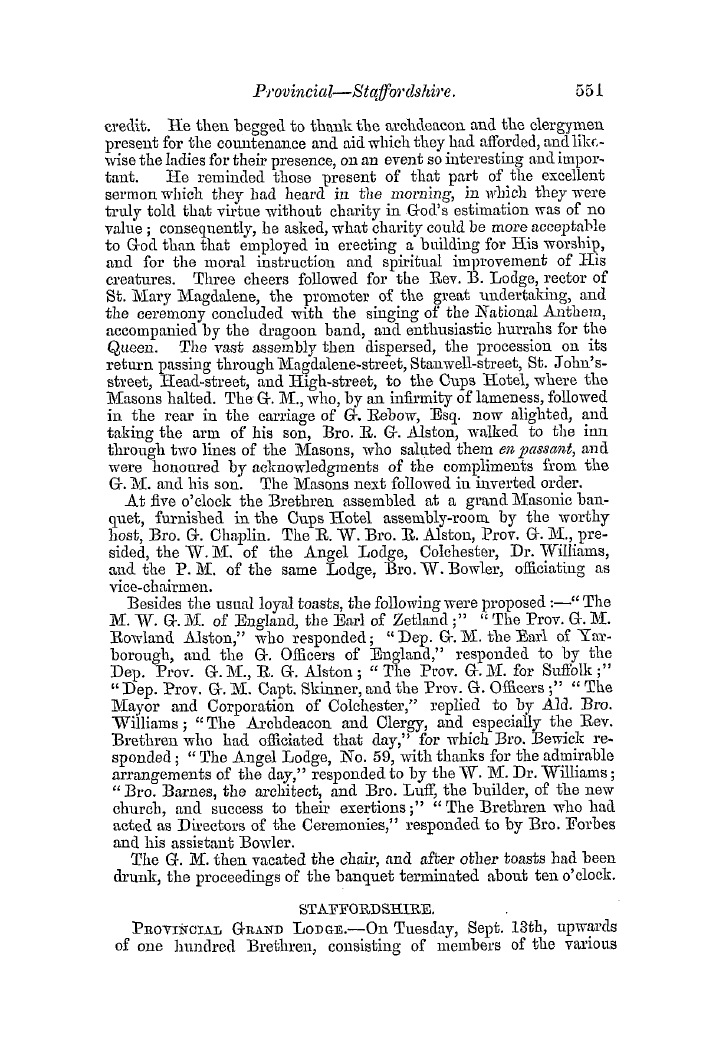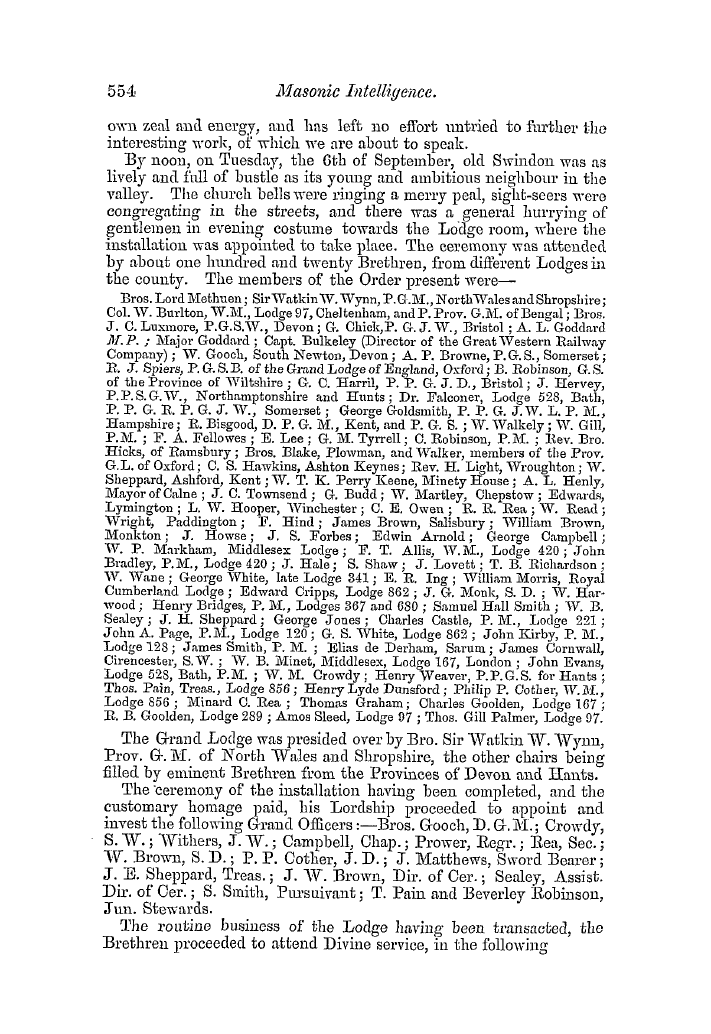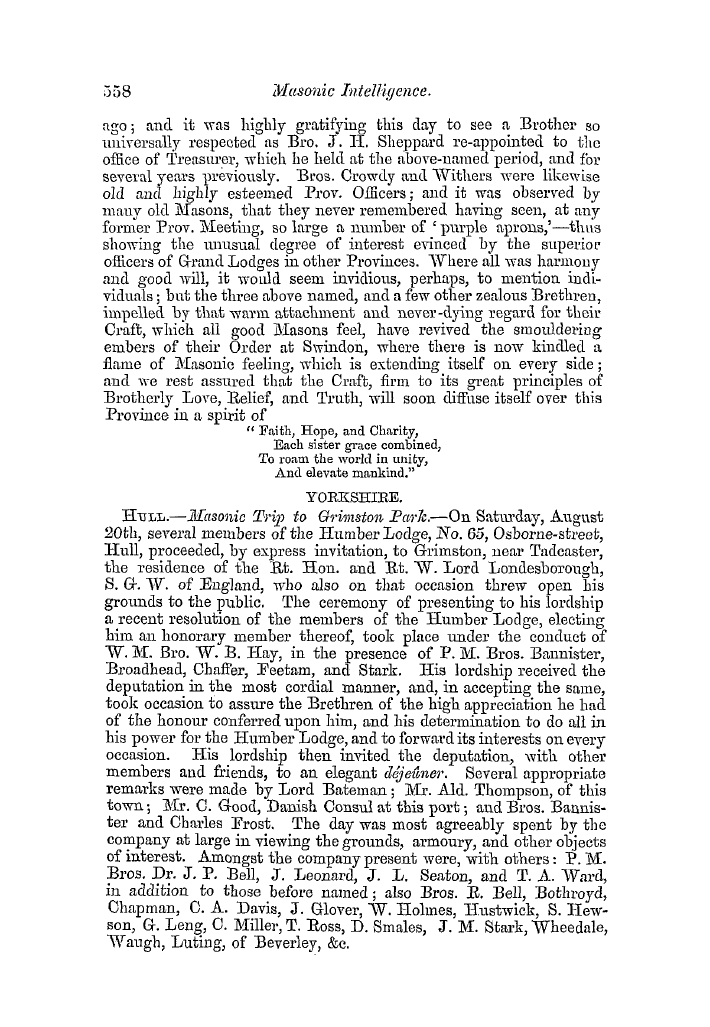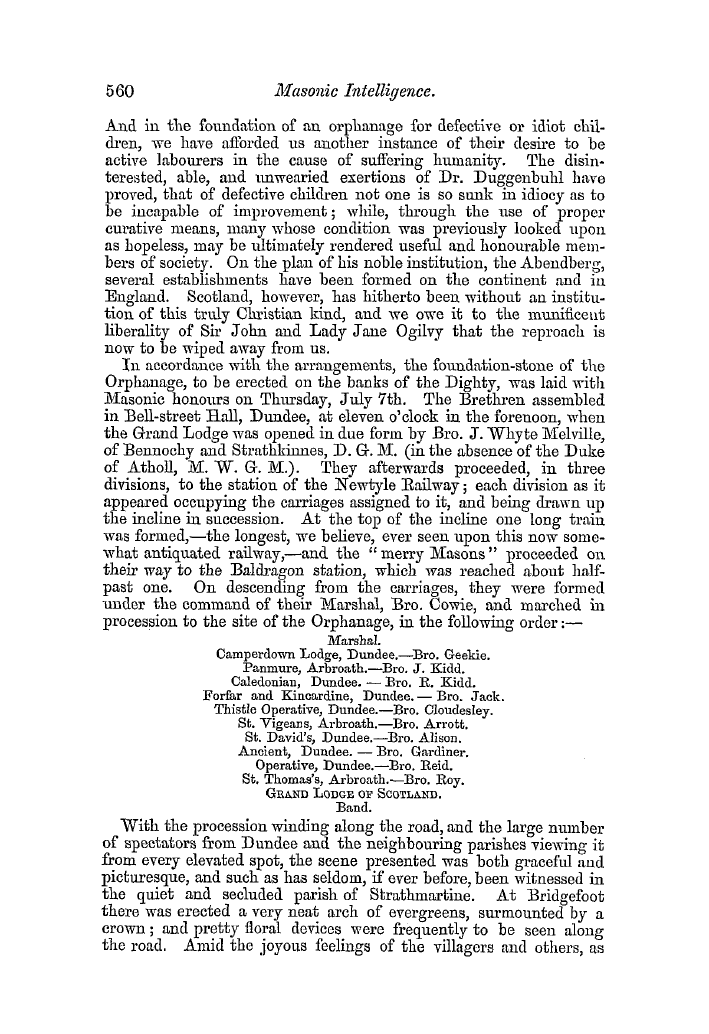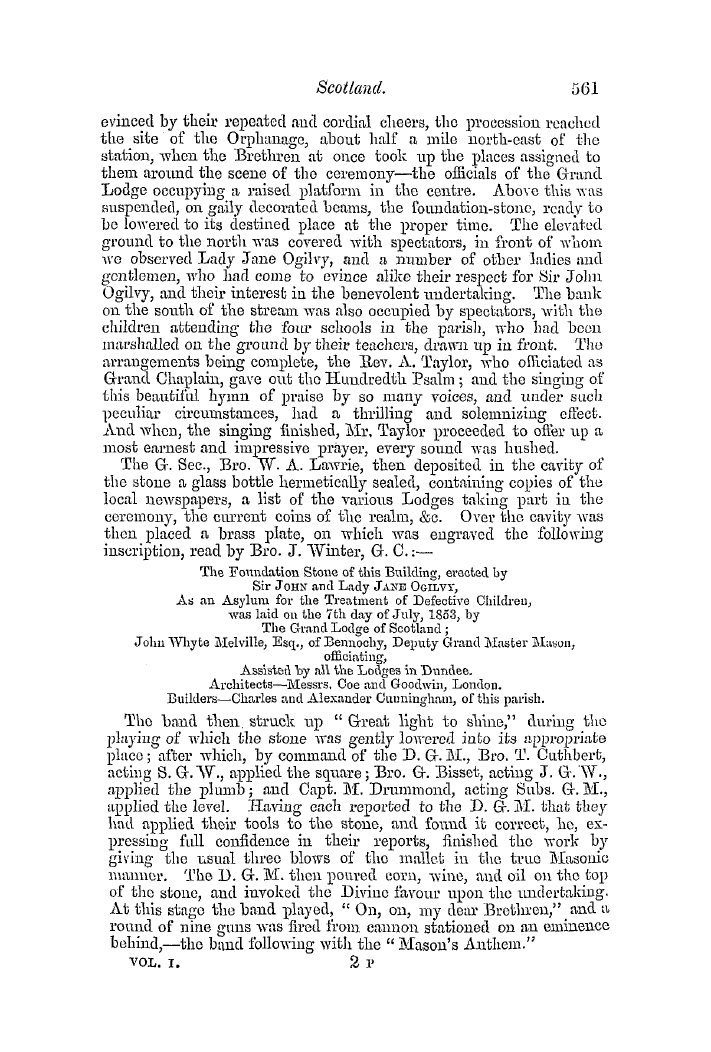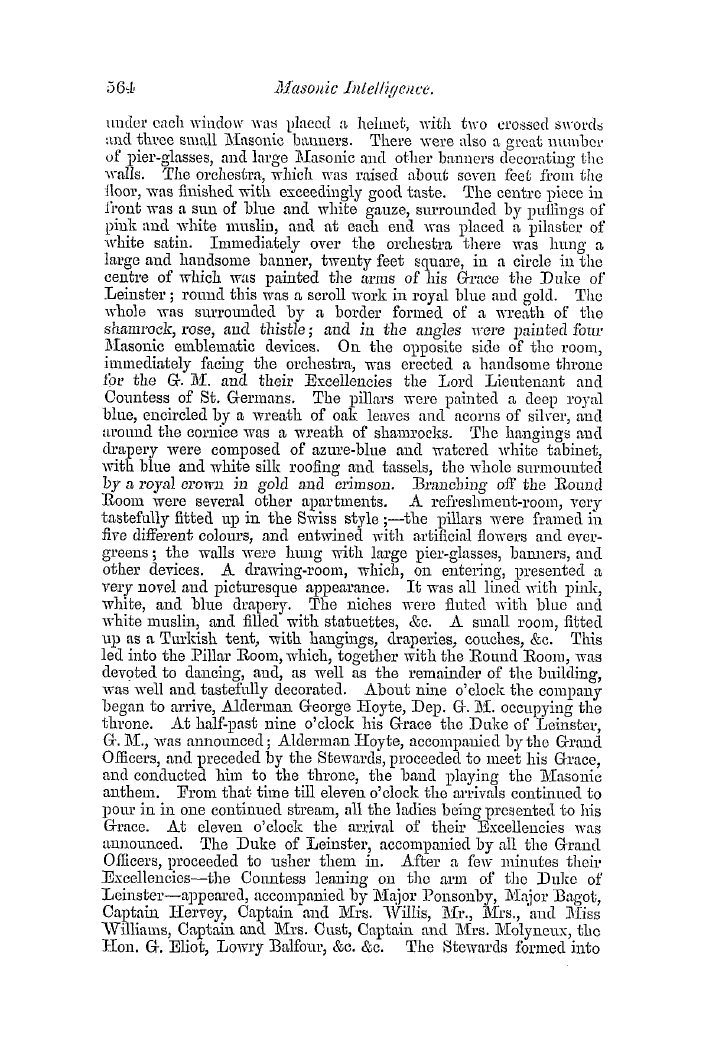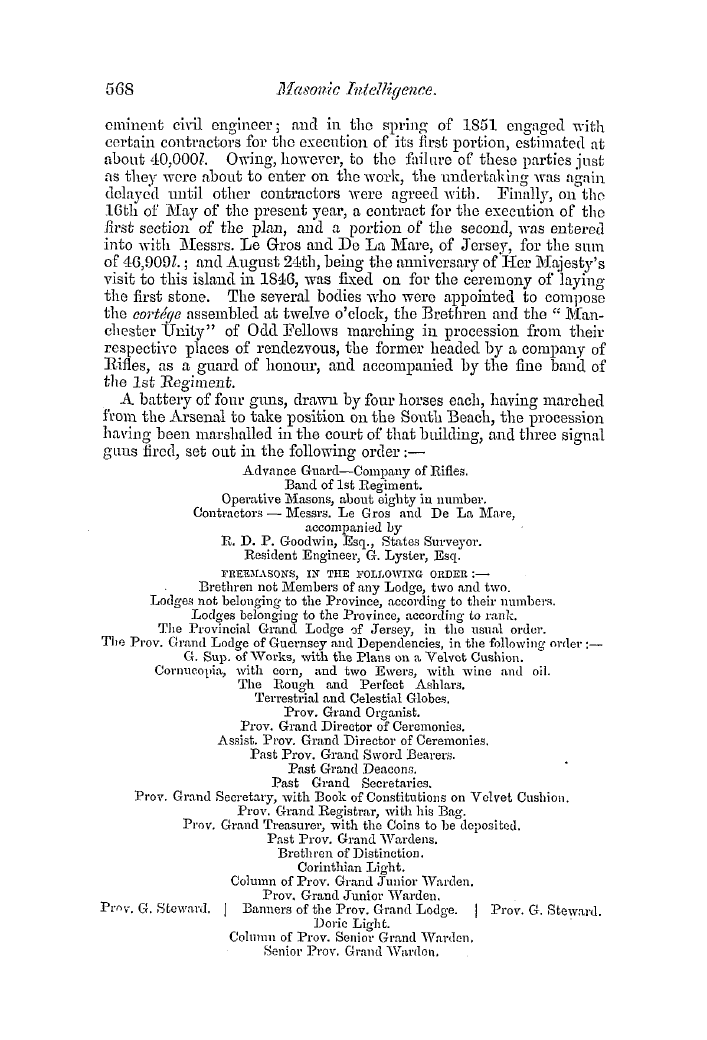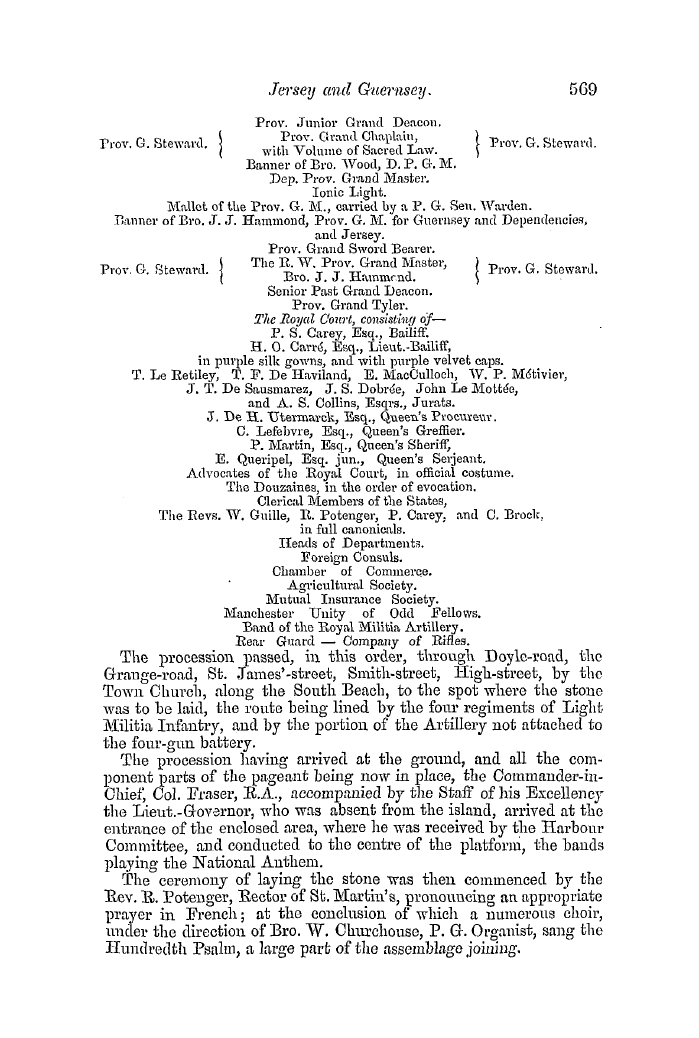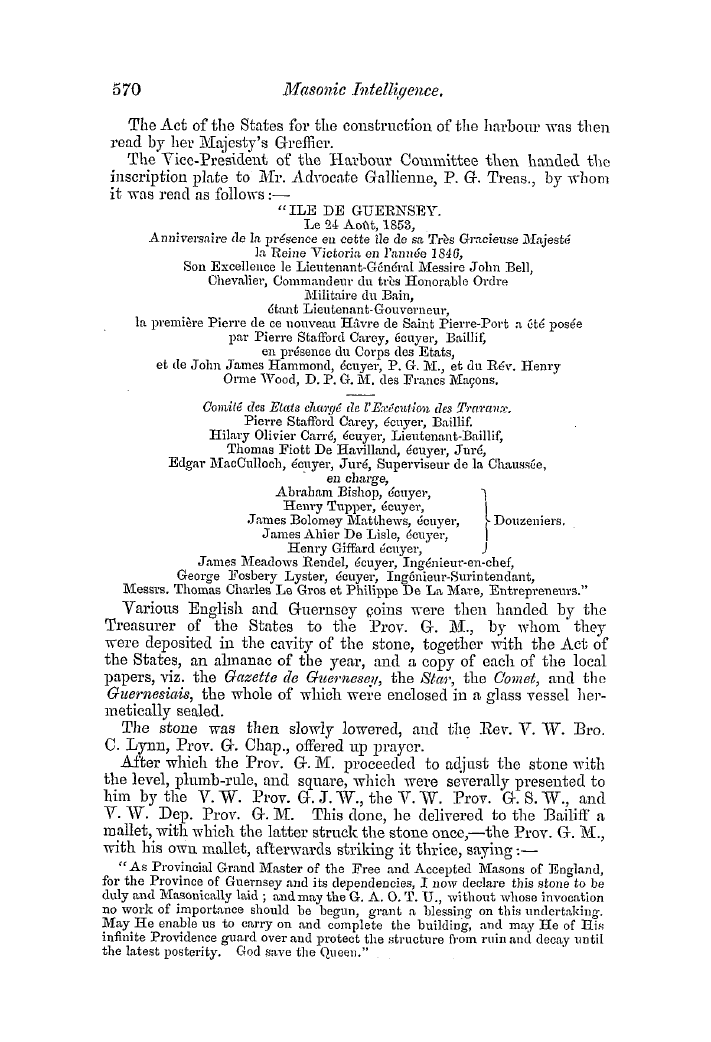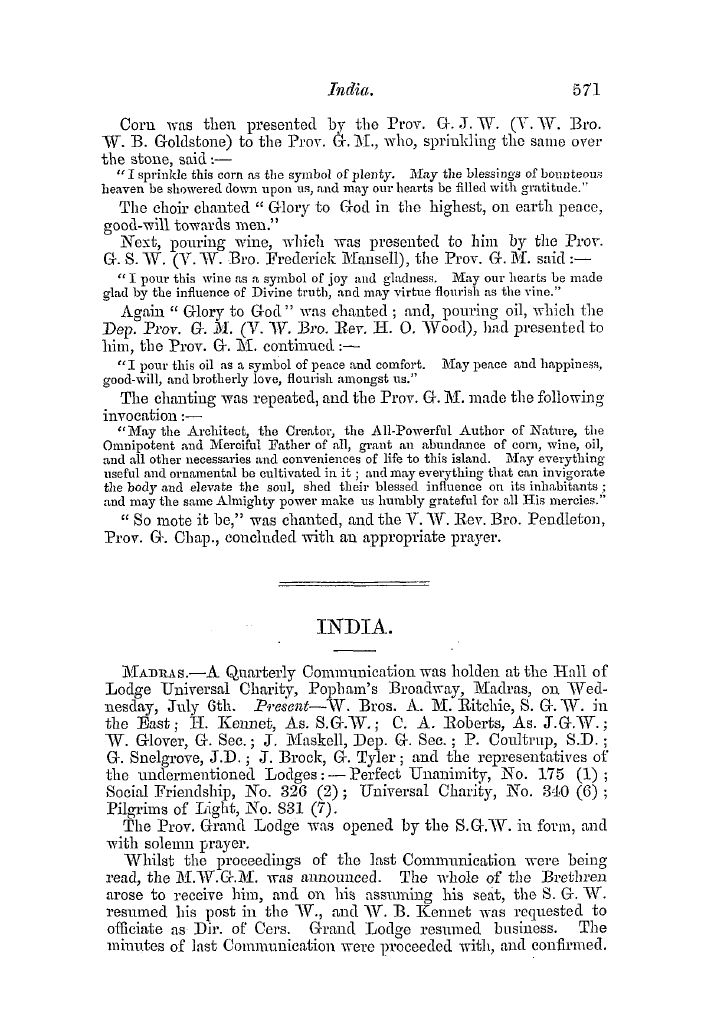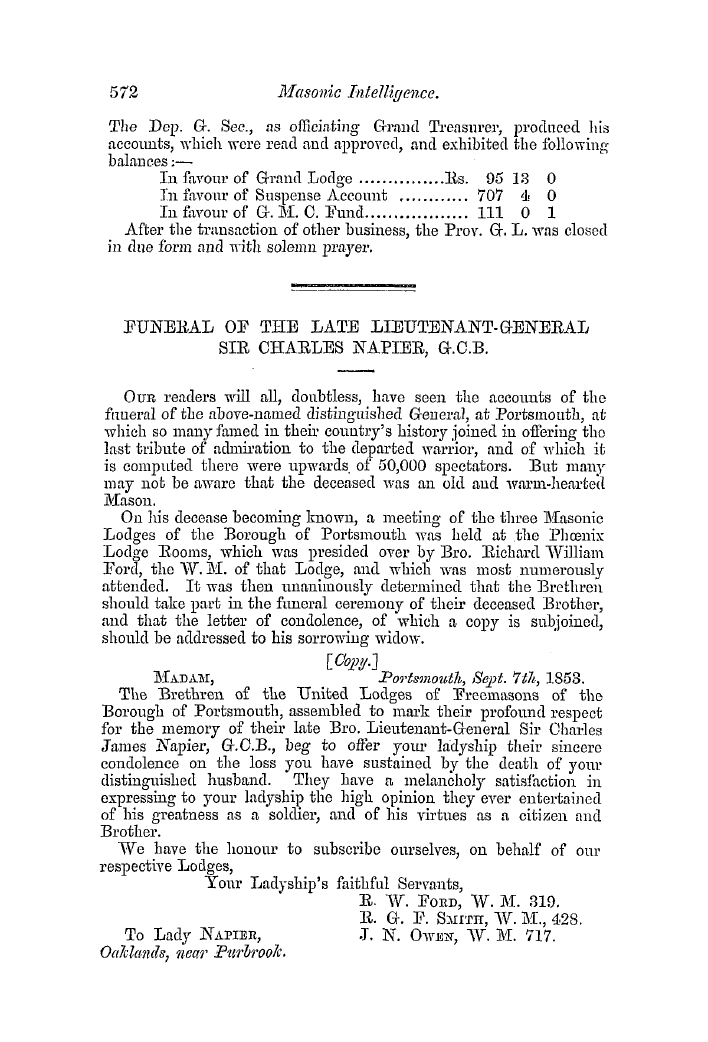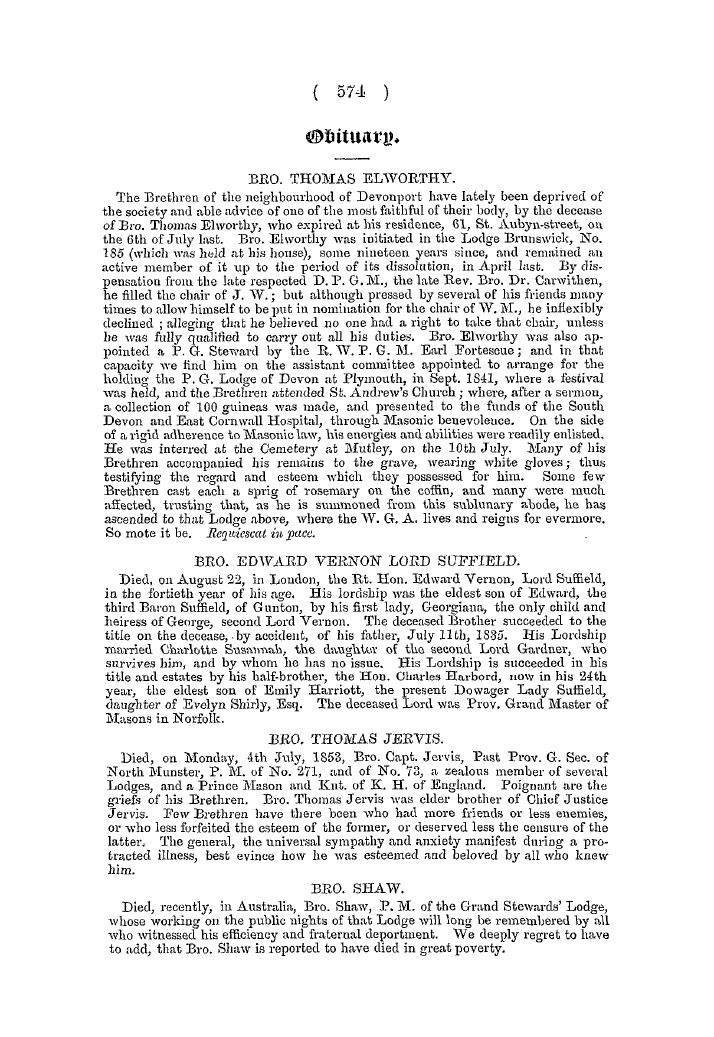-
Articles/Ads
Article ON THE LEGEND OF THE HOLY OR SAN GRAAL; ← Page 12 of 26 →
Note: This text has been automatically extracted via Optical Character Recognition (OCR) software.
On The Legend Of The Holy Or San Graal;
to suppose that many of the observances of these Beruardines would be practised by the Templars . Amongst the monkish Orders none of them were laAdsh in the use of bells ; the Benedictines had them in the greatest number , but the Cistercian rule strictly prohibited the use of more than tAVO , one for the steeple , the other for the chancel-turret , to announce the elevation ; the following stanzas of the poem would seem to have merely put this precept into A erse : —
Stanza 62 * Aller Stimme Krone 1 st Harfensaiten Ziere : In siissem hellen Tone Klingt dennoch furbass der Kalkofon Aerzubiere . Zwo Gloeken waren daraus gedraht mit Kunste , Die Klockel drin von Golde , Der Eeiekkeit zu einer voUkommenen Gunste .-
Die eine zum Tempel sollte , Die ander zum Convente , So man zu Tiscke wollte , Oder an Streites Soldamente ; Glockenklanges wollten sie nicht mehre Nach klosterlichem Orden , Und durch des Grales Schaue dar kehren .
The most striking proof , however , has been hitherto OA erlooked in the following stanza ; an interior chapel is beingdescribed , which , like the Holy House at Loretto , or the Tabernacle of the three kings at Cologne , shall more especially hold the holy Graal . The covering of the circular centre , Avhere the groinings of the arches meet at the tophad been originally
, a diaphonous emerald gem-plate ; it had been replaced by a boss Avith the lamb of St . John carrying in his foot ( claw ) the red cross banner of the Order , which still marks the entrance-gate to the Middle Temple in London , from Fleet Street , and dates from 1648 , most probably replacing one more ancient .
Note: This text has been automatically extracted via Optical Character Recognition (OCR) software.
On The Legend Of The Holy Or San Graal;
to suppose that many of the observances of these Beruardines would be practised by the Templars . Amongst the monkish Orders none of them were laAdsh in the use of bells ; the Benedictines had them in the greatest number , but the Cistercian rule strictly prohibited the use of more than tAVO , one for the steeple , the other for the chancel-turret , to announce the elevation ; the following stanzas of the poem would seem to have merely put this precept into A erse : —
Stanza 62 * Aller Stimme Krone 1 st Harfensaiten Ziere : In siissem hellen Tone Klingt dennoch furbass der Kalkofon Aerzubiere . Zwo Gloeken waren daraus gedraht mit Kunste , Die Klockel drin von Golde , Der Eeiekkeit zu einer voUkommenen Gunste .-
Die eine zum Tempel sollte , Die ander zum Convente , So man zu Tiscke wollte , Oder an Streites Soldamente ; Glockenklanges wollten sie nicht mehre Nach klosterlichem Orden , Und durch des Grales Schaue dar kehren .
The most striking proof , however , has been hitherto OA erlooked in the following stanza ; an interior chapel is beingdescribed , which , like the Holy House at Loretto , or the Tabernacle of the three kings at Cologne , shall more especially hold the holy Graal . The covering of the circular centre , Avhere the groinings of the arches meet at the tophad been originally
, a diaphonous emerald gem-plate ; it had been replaced by a boss Avith the lamb of St . John carrying in his foot ( claw ) the red cross banner of the Order , which still marks the entrance-gate to the Middle Temple in London , from Fleet Street , and dates from 1648 , most probably replacing one more ancient .
































































